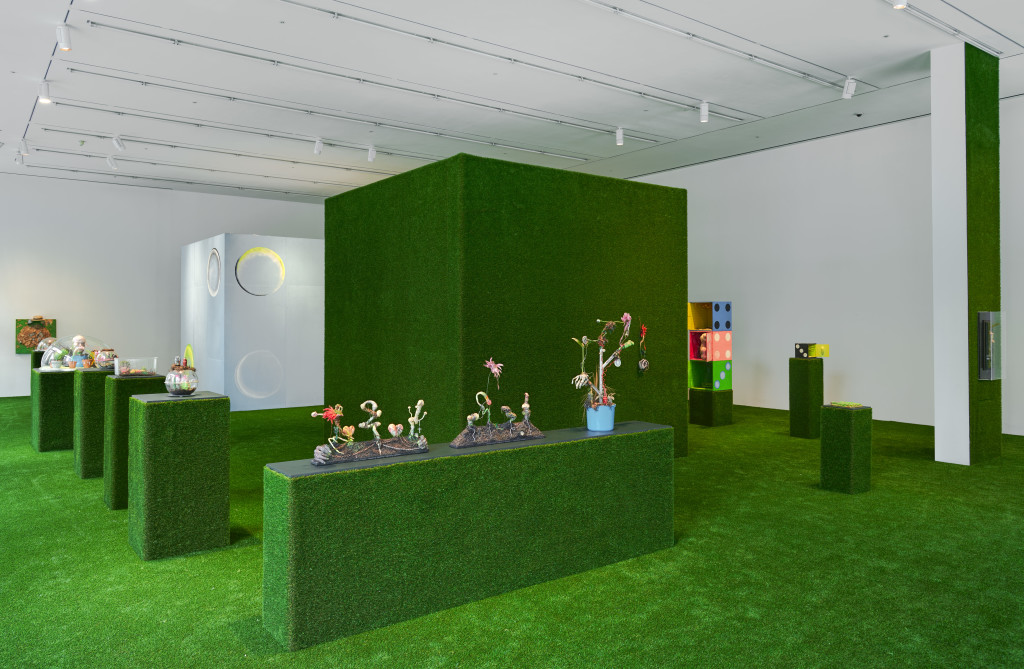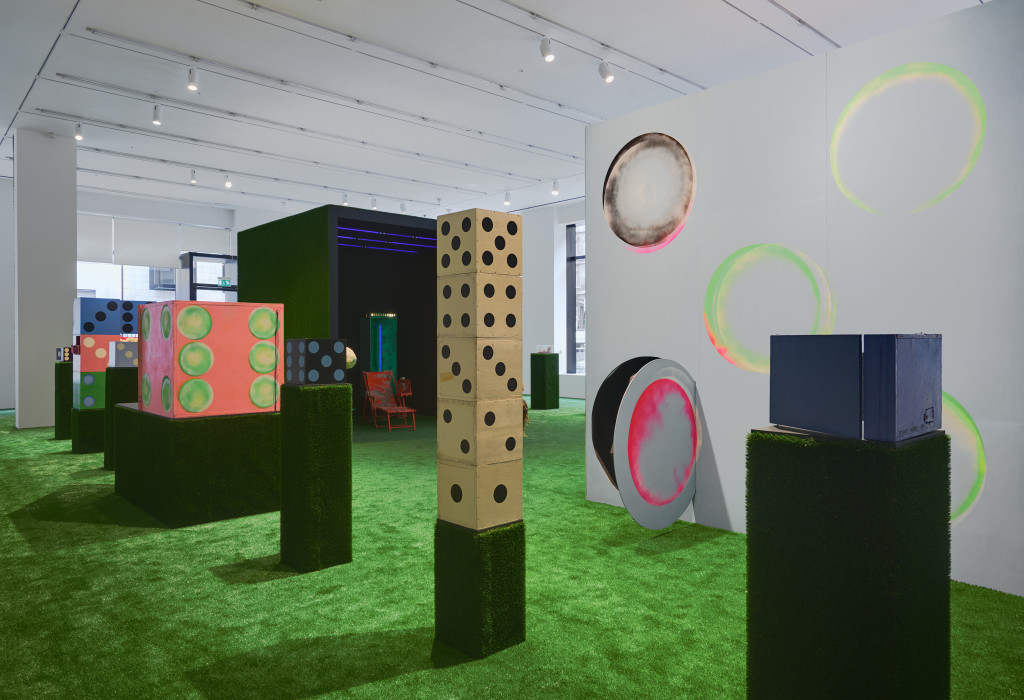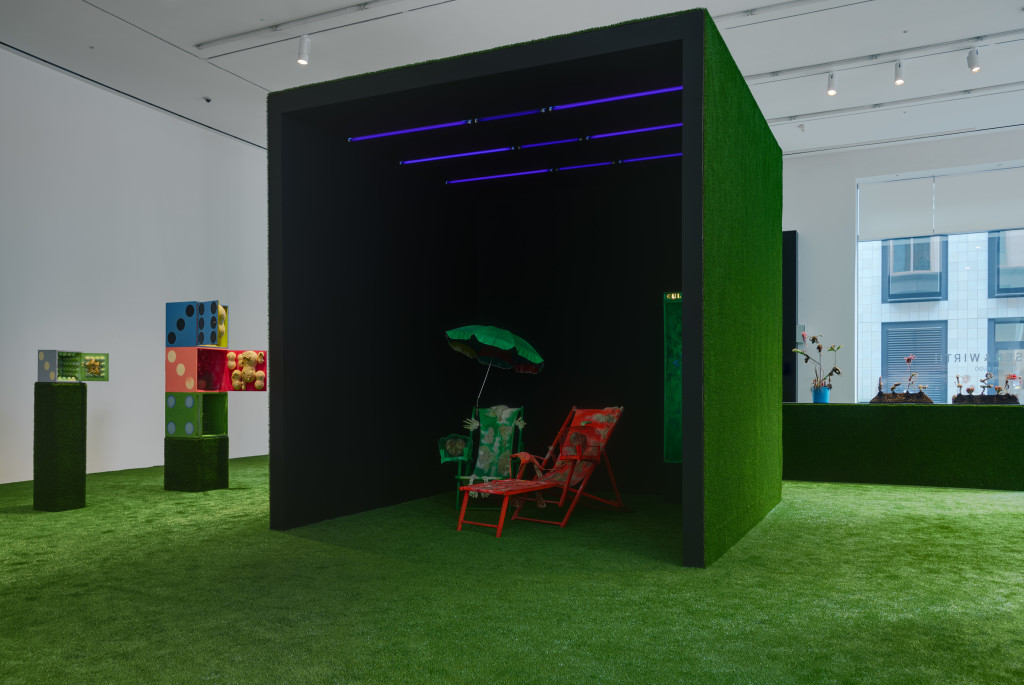Tetsumi Kudo: Hauser & Wirth
by Kostas Prapoglou
We rarely see Hauser & Wirth’s North Gallery in Savile Row totally transformed and freed from its white cube aesthetics. The exhibition of works of Japanese artist Tetsumi Kudo (1935-1990) organized with Andrea Rosen Gallery in New York resembles the healthy and natural habitat of an organic shop, but with a disturbing twist.
Focusing on a miscellany of works made between 1963 and 1972, the show emphasizes the body of work Kudo produced during his first ten years in Paris, after receiving the Grand Prize and a travel fund to the French capital as the winner of the 1962 Second International Young Artists Exhibition in Tokyo.
Having become a prominent figure of Tokyo’s late 1950s avant-garde Anti-Art Movement, Kudo encompassed performative paintings and installations that progressively led to his engagement with environmental issues and, more specifically, with nuclear devastation and radioactivity as a result of human interference. Heavily affected by the atomic bombings of Hiroshima and Nagasaki during the last stage of World War II, his work reflects notions of war desolation, human pain and natural disaster.

Spanning the gallery’s entire space, curious sculptures emerge from the green Astroturf that covers almost every surface—upon entering, viewers are struck by two giant cubes intersecting the main axis of the space. Your Portrait May 66 (1966) is the large cube that visitors encounter first. Externally covered in Astroturf, its rear side reveals a macabre scene. Two folding beach chairs unfold the gruesome tale of two individuals hit by severe radiation. Traces of clothing, flesh and body parts resemble what is left whereas the UV lights installed on the ceiling enhance the vivid, radioactive colors of the setting. Right next to it, the Garden of the Metamorphosis in the Space Capsule (1968) is the second cube in the form of an oversized die. A circular door opens up to a surreal environment impregnating caged and boxed body parts surrounding a garden of outsized poppy flower plants that radiate fluorescent colors when lit by the black lights within the room. The two cubes embody two strong, yet metaphysical, declarations on the deconstruction of human hypostasis leading to the viewer’s confrontation with their very own corporeal detritus.

The cubes are encircled by a series of works embracing Kudo’s dice installations, domes and other sculptures. Their narrative is in line with a post-war didactic consensus infused with an ecological moral. Works such as Greffe ’72 (Graft ’72) (1972) and Human Bonsai – Freedom of Deformity – Deformity of Freedom (1979) are incongruous mixed media assemblages (paint, soil, metal, light bulbs, thermometers) resembling body parts and genital organs cultivated as bonsai trees. His dome series such as Cultivation of Nature & People Who Are Looking At It (1970-1971) and Portrait Ionesco (1971) appear like microenvironments undergoing experimentation in a scientific laboratory. Isolated body limbs, hair, plants, wire, and small battery devices create an unsettling ambience for the viewer. Kudo’s dice series (Votre portrait 1962, 1962, Your Portrait, 1966, Votre Portrait – T, 1965-1966) construct a disturbing narrative where mutated life forms are cocooned and sometimes regulated by timers inside boxes that bring to mind microwave ovens and evoking dice from the outside. Through all these series the artist manifests a commentary on the mass production and boxed products that he encountered in the Western world (ironically now taking place in the Eastern world in a much larger scale) and a simultaneous belief of the unpredictable evolution of life.

Having been fascinated with artists such as Paul McCarthy and Mike Kelley in the past, and more recently with the likes of Adrián Villar Rojas, Kudo’s seminal work couldn’t be more topical in the present tense. With the entire world watching the recent Fukushima events and the rising of radiation levels, reported mutations and increasing numbers of cancer patients (Kudo himself died of cancer) his oeuvre can be regarded as a valid political statement of contemporary culture on a global scale. And although this show focuses on a body of work produced in the 1960s, it undeniably stimulates the viewer and touches their heart as much as it did some half a century ago.
Tetsumi Kudo at Hauser & Wirth North Gallery in London runs through November 21, 2015.